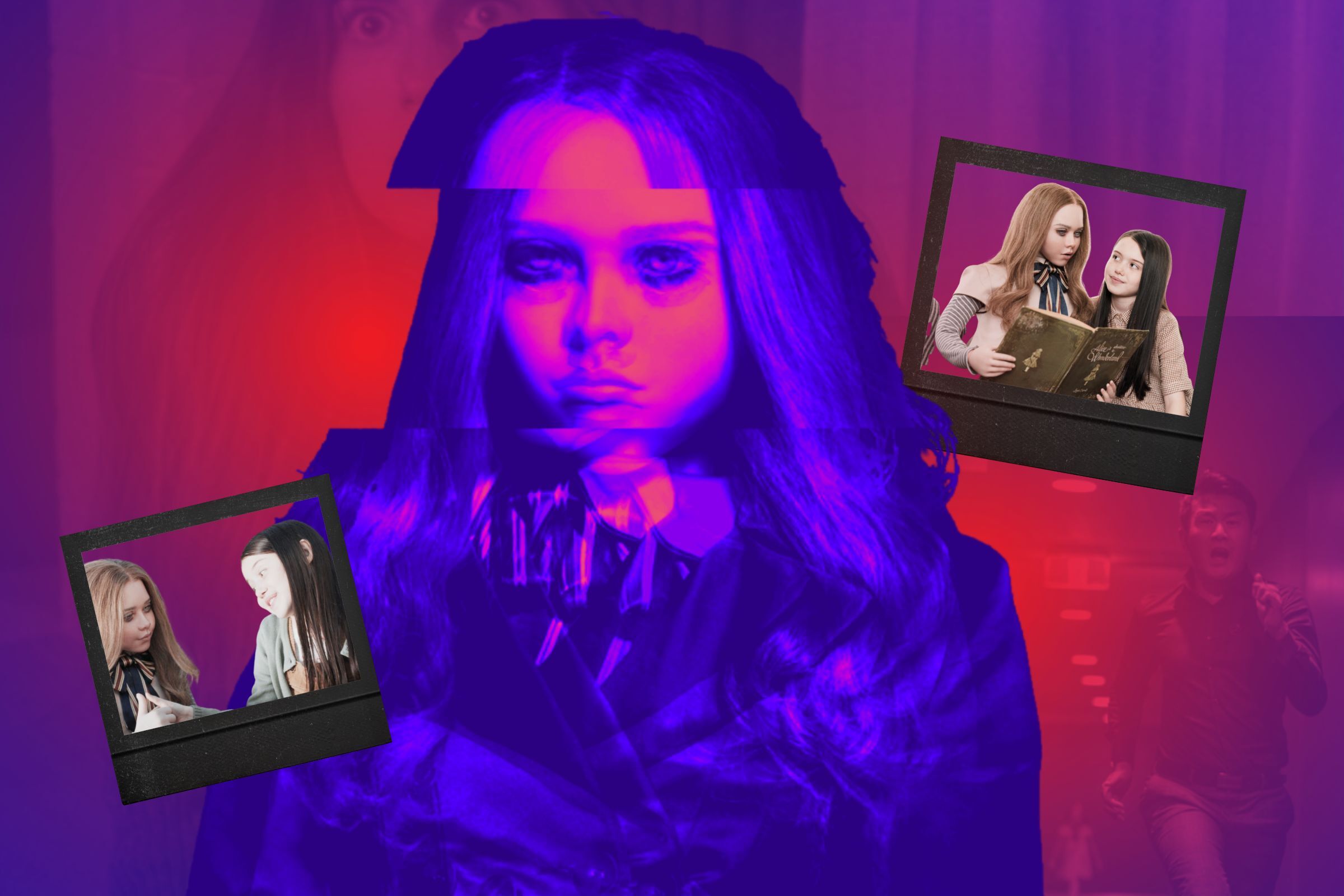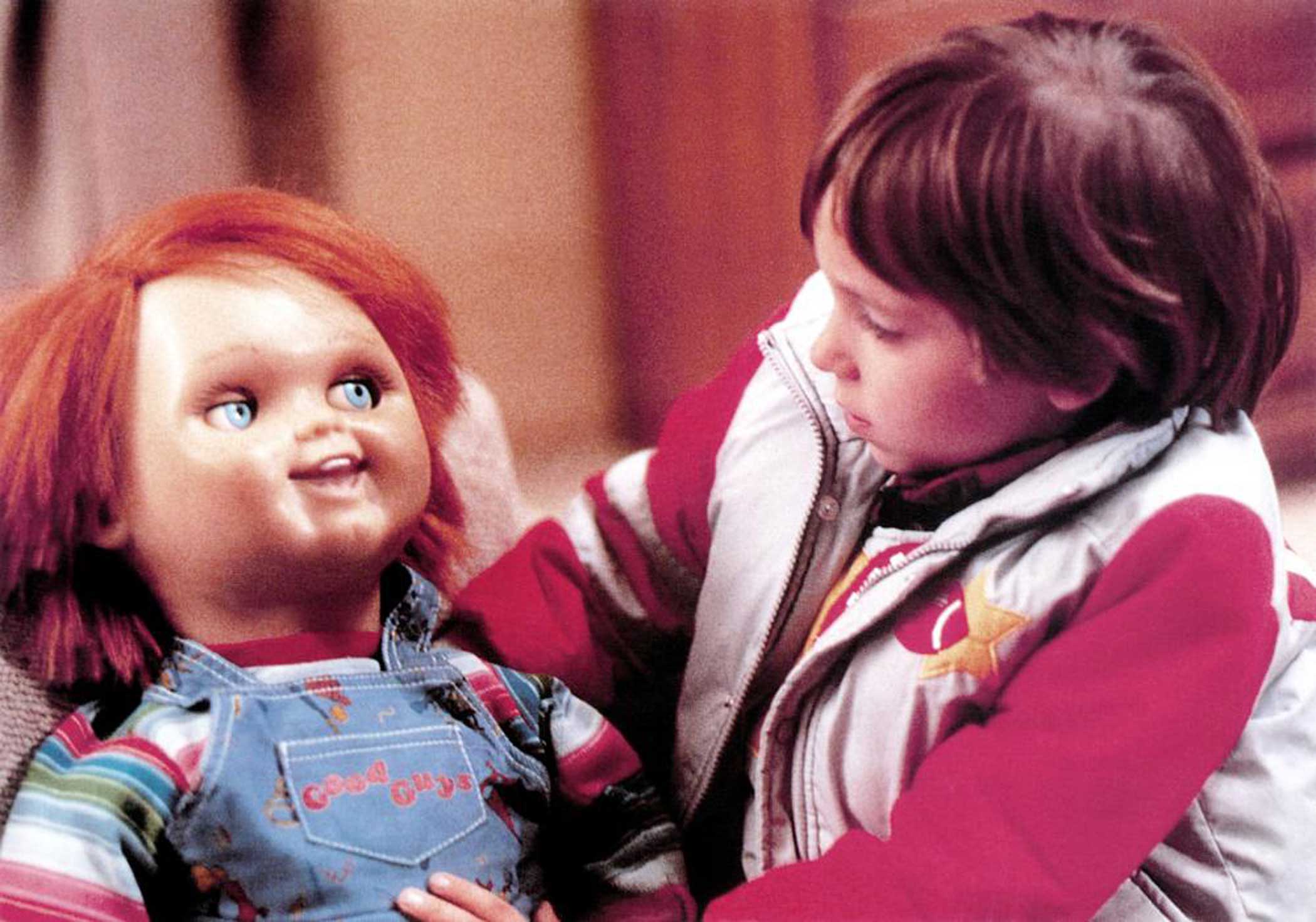
M3GAN’s more than just a toy. She’s part of the family.
At least that’s what roboticist Gemma (Allison Williams) believes about her artificial intelligence-powered creation before the doll goes on a murderous rampage in the highly-anticipated new horror comedy M3GAN.
Produced by horror legends Jason Blum (Get Out, The Invisible Man, Sinister) and James Wan (creator of The Conjuring, Saw, and Insidious franchises), M3GAN generated major buzz ahead of its Jan. 6 release thanks to a savvy marketing campaign that turned its titular villain into an instant star on social media. As Twitter user Alex Abad-Santos put it, “M3GAN – a movie that completely understands the assignment of giving the people a bitchy murder doll.”
M3GAN follows workaholic Gemma as she takes in her 8-year-old niece, Cady (Violet McGraw), following the death of Cady’s parents. Struggling to balance her new caretaker role with the pressure of being a robotics engineer at a leading toy company, Gemma turns to her latest pet project, cutting-edge companion doll M3GAN (played by Amie Donald and voiced by Jenna Davis), to solve her problems. Cady and M3GAN become fast friends, but it’s only a matter of time before things start to go horrifically awry.
M3GAN is already making its mark on the horror genre, with critics praising the movie as living up to the hype. “It’s funny in ways anticipated and not, and there is enough suspense—or something like suspense—to balance out the coy winks to the audience,” wrote Vanity Fair‘s Richard Lawson. “The irony isn’t overweening, the doll is equal parts creepy and yassified, and the human lead, Allison Williams, anchors things with an admirable commitment to the bit.”
Of course, M3GAN is by no means the first creepy doll to grace the silver screen. There’s a storied history of dolls gone evil that dates back to film’s early days.
How creepy dolls became a horror phenomenon

Back in 1929, musical drama The Great Gabbo, while not a traditional fright flick, introduced audiences to a spooky ventriloquist dummy named Otto and his malicious owner Gabbo. The creepy doll subgenre of horror seems to have sprung from there, with 1945 horror anthology film Dead of Night featuring a segment titled “The Ventriloquist’s Dummy” that relied on an even more sinister relationship between a puppeteer and his dummy.
“Most of the early scary doll movies primarily involved ventriloquist dummies,” says James Kendrick, an associate professor of film and digital media at Baylor University who’s an expert on horror. “The whole concept of a ventriloquist dummy is that it seems to have a life of its own. They move, they talk seemingly of their own accord. Although we know it’s all a performance by the ventriloquist, they’re ready-made to break free of that and become their own entity and have their own malevolent agenda.”
The disturbed ventriloquist-dummy duo became a staple of creepy doll film culture, popping up in movies like 1964’s Devil Doll, 1978’s Magic, and, starting in 2004, the Saw franchise. Who could forget the first time they saw Billy the Puppet roll up to one of Jigsaw’s death traps on his little tricycle?
As for when children’s possessed playthings came on the scene, following a 1963 episode of The Twilight Zone titled “The Living Doll,” the trope really took off in the ’80s. 1987’s Dolls saw an elderly couple trapping the spirits of not-so-nice visitors inside the titular toys. This was quickly followed by the introduction of perhaps the most famous killer doll of all time in 1988’s Child’s Play: the one and only Chucky. Notable entries to follow have included 2002’s May, 2014’s Annabelle, and 2016’s The Boy.
“Like a lot of topics in horror whether it’s zombies or vampires, [doll movies] tend to run in cycles,” Kendrick says. “You have one breakout film and then you have a whole bunch that try to capitalize on that.”
By playing off fears of AI turned sentient, M3GAN is a creepy doll movie for the modern age.
“AI is an interesting concept because AI is uncanny,” Kendrick says. “It’s intelligence that we recognize as kind of human, but not quite right. So if you put that into a doll, you now have the physical uncanniness of the doll combined with a psychological or intellectual uncanniness. The doll is essentially trying to replicate human behavior, but not quite getting it right.”
Why creepy dolls are so scary

The reason why dolls are such great fodder for horror movies all comes back to this concept of the “uncanny,” Kendrick says. It’s the idea that something is simultaneously familiar and unfamiliar.
“When something’s familiar, it’s generally comforting. Or we at least know it, so we have control over it,” he says. “But when an object or place is both familiar and unfamiliar, something’s not right, but you can’t put your finger on what it is. Dolls, especially the kind that tend to show up in horror movies, are always very lifelike, but not exactly. They come really close to looking human, but don’t quite get there.”
That similarity is what makes them so creepy, he adds: “If you see M3GAN out of the corner of your eye, you might mistake it for an actual child for a second before realizing something is wrong.”
A 2010 study published in the scientific journal Psychological Science found that the creepiness of dolls relates to the way our brains detect and pay attention to faces. According to the research, humans’ perception of life in a face is largely gleaned from the eyes. In turn, recognizing life in a face equates to recognizing there’s a mind behind that face. That means the more lifelike a doll’s face, and specifically its eyes, are, the more likely we are to perceive it as aware.
“There are these signals that are telling our brain this thing is alive,” Thalia Wheatley, a cognitive neuroscientist at Dartmouth University who cowrote the study, told Vice in 2018. “But we know it’s not alive. And that juxtaposition is really creepy.”
To make M3GAN as unnerving as possible, Wan said in commentary included in the film’s production notes that he and director Gerard Johnstone agreed that it should feel like a child’s plaything that comes to life. “To see it have a life of its own is what gives it that creepy, scary element,” he said. “After much back-and-forth design work and discussion with Gerard, we ended up leaning into making M3GAN more physically realistic. It’s the rare occasion where an ‘uncanny valley’ look actually adds to M3GAN’s creepiness.”
More Must-Reads From TIME
- Dua Lipa Manifested All of This
- Exclusive: Google Workers Revolt Over $1.2 Billion Contract With Israel
- Stop Looking for Your Forever Home
- The Sympathizer Counters 50 Years of Hollywood Vietnam War Narratives
- The Bliss of Seeing the Eclipse From Cleveland
- Hormonal Birth Control Doesn’t Deserve Its Bad Reputation
- The Best TV Shows to Watch on Peacock
- Want Weekly Recs on What to Watch, Read, and More? Sign Up for Worth Your Time
Write to Megan McCluskey at megan.mccluskey@time.com